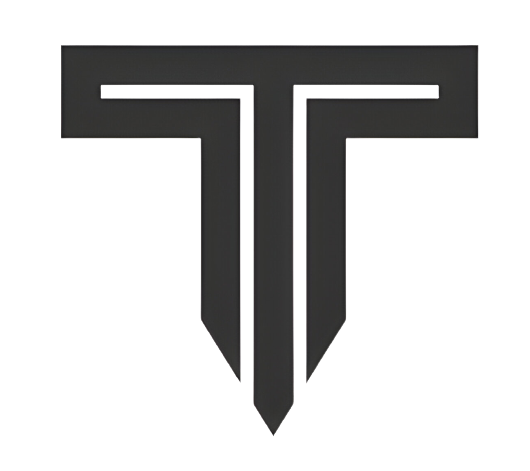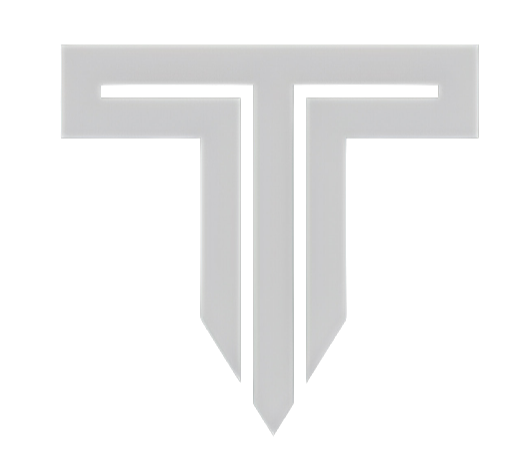"Executive Summary Middle East and Africa Low-E (Low Emissivity) Glass Market Trends: Share, Size, and Future Forecast
- The Middle East and Africa Low-E (Low Emissivity) Glass Market size was valued at USD 9.43 billion in 2024 and is expected to reach USD 17.78 billion by 2032, at a CAGR of 7.3% during the forecast period

Being an excellent market research report, Middle East and Africa Low-E (Low Emissivity) Glass Market report serves as a backbone for the business when it is about thriving in the competition. The report is all-embracing global market research report and it identifies, analyses, and estimates the emerging trends along with major drivers, challenges and opportunities in the Middle East and Africa Low-E (Low Emissivity) Glass Market industry along with the analysis of retailers, geographical regions, types, and applications. This industry report studies wide-ranging industry analysis with exact estimates and forecasts that provides complete research solutions with maximum industry clarity. Thus, Middle East and Africa Low-E (Low Emissivity) Glass Market report is the best solution for businesses if they want to stay ahead of the competition in today's rapidly moving business landscape.
The finest Middle East and Africa Low-E (Low Emissivity) Glass Market analysis report provides estimations about the growth rate and the market value based on market dynamics and growth inducing factors. Businesses can get current as well as upcoming technical and financial details of the industry to 2030 with this market research report. The report is mainly distributed to the users in the form of PDF or spreadsheet or PPT (if asked by client). The report also mentions CAGR value fluctuations during the forecast period of 2023-2030 for the market. The winning Middle East and Africa Low-E (Low Emissivity) Glass Market report has been formulated with the best-practice models, comprehensive market analysis and research methodologies so that clients attain perfect market segmentation and insights.
Examine detailed statistics, forecasts, and expert analysis in our Middle East and Africa Low-E (Low Emissivity) Glass Market report. Download now:
https://www.databridgemarketresearch.com/reports/middle-east-and-africa-low-e-glass-market
Middle East and Africa Low-E (Low Emissivity) Glass Sector Overview
**Segments**
- By Type: Hard Coat Low-E Glass, Soft Coat Low-E Glass
- By Coating: Single Low-E Glass, Double Low-E Glass, Triple Low-E Glass
- By Application: Residential, Commercial, Industrial
The Middle East and Africa Low-E (Low Emissivity) Glass market is segmented based on type, coating, and application. The types of Low-E Glass include hard coat and soft coat Low-E Glass, each offering different levels of performance and durability. In terms of coating, Low-E Glass is available as single, double, or triple coated, providing varying degrees of energy efficiency and insulation. The applications of Low-E Glass in the region span across residential, commercial, and industrial sectors, with each sector having unique requirements and specifications for Low-E Glass solutions.
**Market Players**
- Saint-Gobain
- AGC Inc.
- Nippon Sheet Glass Co., Ltd.
- Guardian Industries
- SCHOTT AG
- NSG Pilkington
- Vitro, S.A.B. de C.V.
- GUARDIAN GLASS LLC
- Promat DENSGLASS ULTRAROCKWOOL
- SISECAM
- Vitro Architectural Glass
- PPG Industries, Inc.
- Central Glass Co., Ltd.
- Cardinal Glass Industries
- Euroglas GmbH
Key market players in the Middle East and Africa Low-E Glass industry include industry giants like Saint-Gobain, AGC Inc., Nippon Sheet Glass Co., Ltd., and Guardian Industries. These companies are at the forefront of innovation and technology in the Low-E Glass market, constantly developing new products and solutions to meet the growing demand for energy-efficient and sustainable building materials. Other prominent players in the market include SCHOTT AG, NSG Pilkington, Vitro, S.A.B. de C.V., and GUARDIAN GLASS LLC, among others, who collectively contribute to the competitive landscape of the Low-E Glass market in the region.
The Middle East and Africa Low-E Glass market is poised for steady growth driven by factors such as increasing focus on energy efficiency, rising construction activities, and growing awareness about sustainable building materials. With advancements in technology and the development of innovative coating solutions, the demand for Low-E Glass is expected to surge across residential, commercial, and industrial applications in the region. Market players are investing in research and development to introduce high-performance Low-E Glass products that cater to the specific requirements of different sectors.
One of the key trends shaping the Middle East and Africa Low-E Glass market is the shift towards green building practices and stringent energy efficiency regulations. As governments and regulatory bodies push for sustainability in construction, the adoption of Low-E Glass as a building material of choice is likely to increase significantly. The ability of Low-E Glass to reduce heat transfer while allowing ample natural light to enter buildings makes it an attractive option for architects, builders, and developers looking to enhance the energy performance of structures.
Moreover, the emphasis on enhancing the overall aesthetic appeal of buildings is driving the demand for Low-E Glass with superior optical clarity and color neutrality. Market players are focusing on developing Low-E Glass products that not only offer thermal insulation but also contribute to the visual appeal of structures. This trend is particularly prominent in the commercial sector, where building owners are increasingly investing in energy-efficient solutions that also elevate the design and aesthetics of their properties.
Another factor influencing the market is the rising urbanization in the Middle East and Africa region, leading to a surge in construction activities across residential and commercial sectors. The need for sustainable and energy-efficient buildings is driving the adoption of Low-E Glass in new construction projects as well as in retrofitting existing structures to improve their energy performance. The market players are leveraging this opportunity to introduce a wide range of Low-E Glass products tailored to different climate conditions and architectural requirements prevalent in the region.
In conclusion, the Middle East and Africa Low-E Glass market are witnessing significant growth prospects fueled by factors such as increasing emphasis on energy efficiency, urbanization, and regulatory push towards sustainable construction practices. Market players are at the forefront of innovation, introducing advanced Low-E Glass solutions to meet the evolving needs of the construction industry. With a focus on developing high-performance, visually appealing, and environmentally friendly products, the market is poised for continued expansion in the coming years.The Middle East and Africa Low-E Glass market presents lucrative opportunities for key market players due to several significant factors driving growth in the region. One key aspect influencing the market is the increasing focus on energy efficiency across various sectors, including residential, commercial, and industrial. As sustainability becomes a top priority for building owners and developers, the demand for Low-E Glass as a sustainable building material is expected to surge. Low-E Glass offers superior thermal insulation properties, helping to reduce heat transfer and energy consumption, thereby aligning with the broader sustainability goals of the region.
Furthermore, the growing construction activities in the Middle East and Africa region are also driving the demand for Low-E Glass. With rapid urbanization and infrastructure development, there is a rising need for energy-efficient building solutions that can enhance the overall thermal performance of structures. Low-E Glass, with its ability to regulate heat transfer and maintain indoor comfort levels, is becoming increasingly popular among architects, designers, and construction companies looking to meet stringent energy efficiency standards.
Moreover, the market is witnessing a trend towards green building practices and strict energy efficiency regulations imposed by governments and regulatory bodies. This shift towards sustainability is compelling stakeholders in the construction industry to adopt Low-E Glass as a viable solution for reducing carbon footprint and achieving energy savings in buildings. The continuous advancements in Low-E Glass technology, such as the development of high-performance coatings and innovative product designs, are further catalyzing market growth and adoption.
Additionally, the aesthetic appeal of Low-E Glass is playing a pivotal role in driving market demand, especially in the commercial sector. Building owners and developers are now seeking energy-efficient solutions that not only offer performance benefits but also enhance the visual aesthetics of their properties. Low-E Glass, with its ability to provide thermal insulation without compromising on natural light transmission and clarity, is being increasingly preferred for modern architectural designs and sustainable building projects.
Overall, the Middle East and Africa Low-E Glass market is poised for continued expansion as market players continue to invest in research and development to introduce cutting-edge solutions that address the evolving needs of the construction industry. With a strong emphasis on energy efficiency, sustainability, and aesthetics, Low-E Glass is expected to play a crucial role in shaping the future of building materials in the region. As key stakeholders collaborate to innovate and deliver advanced Low-E Glass products tailored to local market requirements, the market is set to experience sustained growth and adoption across diverse applications and sectors.
View company-specific share within the sector
https://www.databridgemarketresearch.com/reports/middle-east-and-africa-low-e-glass-market/companies
Strategic Question Sets for In-Depth Middle East and Africa Low-E (Low Emissivity) Glass Market Analysis
- What is the current revenue pool of the Middle East and Africa Low-E (Low Emissivity) Glass Market?
- How is the annualized growth expected to trend?
- What functional segments are analyzed in the Middle East and Africa Low-E (Low Emissivity) Glass Market report?
- Who are the companies with the most aggressive growth plans?
- What recent upgrades have been introduced to leading products?
- What countries are major contributors to global Middle East and Africa Low-E (Low Emissivity) Glass Market demand?
- What region is experiencing structural transformation?
- Which countries are leading exporters of related products?
- Where is product acceptance highest?
- What are the cross-industry trends influencing growth for Middle East and Africa Low-E (Low Emissivity) Glass Market?
Browse More Reports:
Global Fiber Optic Connectors Market
Global Industrial Adhesives Market
Global Security Cameras Market
Global Cement Boards Market
Global Freight Forwarding Market
Europe Amino Acid Based Biostimulants Market
U.S. Variable Refrigerant Flow (VRF) Systems Market
Global Digital Mobile Radio (DMR) Market
Asia-Pacific Marine and Freshwater Seeds/Seedlings Market
Global Active Optical Cable and Extender Market
Global Resilient Flooring Market
Asia-Pacific Food Storage Container Market
Global Cell Surface Market
Global Government Cyber Warfare Market
Global Electronic Trial Master File (eTMF) Systems Market
Global Kidney Dialysis Centers Market
Global Placental Stem Cells (PSCS) Market
Europe Breast Biopsy Devices Market
Global Biotech Ingredient Market
Global Low Power Wide Area Network Market
Global Sports Technology Market
Global Graphene Nanoplatelets Market
Global Automotive Uninterruptible Power Supply (UPS) (In Vehicle UPS) Market
Global Naphtha Market
Europe Web Hosting Services Market
Global Rosacea Treatment Market
About Data Bridge Market Research:
An absolute way to forecast what the future holds is to comprehend the trend today!
Data Bridge Market Research set forth itself as an unconventional and neoteric market research and consulting firm with an unparalleled level of resilience and integrated approaches. We are determined to unearth the best market opportunities and foster efficient information for your business to thrive in the market. Data Bridge endeavors to provide appropriate solutions to the complex business challenges and initiates an effortless decision-making process. Data Bridge is an aftermath of sheer wisdom and experience which was formulated and framed in the year 2015 in Pune.
Contact Us:
Data Bridge Market Research
US: +1 614 591 3140
UK: +44 845 154 9652
APAC : +653 1251 975
Email:- [email protected]
"


